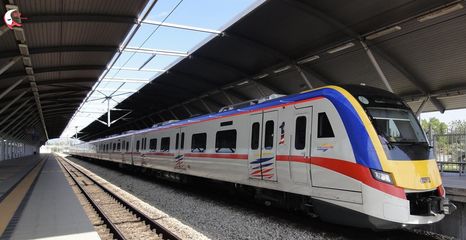
Asia is experiencing a high-speed rail boom, while China stands on the verge of completing 19,000 kilometers of operational High-Speed Railway (HSR) lines, representing 60 percent of total global capacity.
In just eight years, China has built the world's largest network of HSRs. One notable project could transport freights and passengers between Beijing and Moscow in 33 hours.
Beijing is negotiating HSR projects with more than two dozen countries, fulfilling the age-old dream of connecting transoceanic and transcontinental trading routes and hubs into a single matrix.
The Trans-Asian Railway (TAR) – aka the "Iron Silk Road" – is being transformed from a 50s-era United Nations (UN) dream into a concrete Chinese project today. One of TAR's southern spurs would create economic synergies between China and the Association of Southeast Asian Nations (ASEAN).
The 10-member ASEAN, with a combined GDP of US$ 2.6 trillion, has surpassed Japan to become China's largest trading partner. The ASEAN-China trade comprised 13 percent of global trade in 2010, and this percentage is growing as rapidly as the economies of East Asia.
Infrastructure is the locomotive of development, and China possesses uncanny foresight in laying down future tracks. Prior investments in rail technologies are generating cutting-edge dividends.
The Beijing-based CRRC (China Railways Rolling-stock Corporation), the country's largest train manufacturer, has recently unveiled a new 690-kilowatt traction system for bullet trains that may exceed 500km per hour.
Even Germany, the traditional pacesetter of railway technologies, may soon be outsourcing components from Chinese manufacturers.
South East Asian Spur
Malaysia, one of the most-developed economies in ASEAN region, is experiencing a rail boom, particularly in the Kuala Lumpur-centered Klang valley.
The Malaysian government may spend up to RM160 billion (CNY 240 billion) on rail-related projects until 2020, but facing a shortage of railway engineers, technical support and funding for projects, such as the 350km Kuala Lumpur-Singapore High-Speed Rail (HSR) line.
The link will cut travel time between both metropolises to 90 minutes, compared to the current 4-5 hour journey by road.
Ticket prices are projected to cost under RM400 for a return-trip – a highly economical rate considering the RM55 price tag for a one-way Express Rail Link (ERL) that connects the city center with Kuala International Airport, 57km away.
It is a curious comparison that prompted AirAsia founder Tony Fernandes to quip that it was "cheaper to fly."
The KL-Singapore link, expected to cost RM40bil (S$14.8 billion), will benefit both nations, which bring the two metropolises closer, and may draw MNCs (multinationals), especially Chinese companies, to consider Kuala Lumpur as a regional motherlode vis-a-vis Singapore.


















































